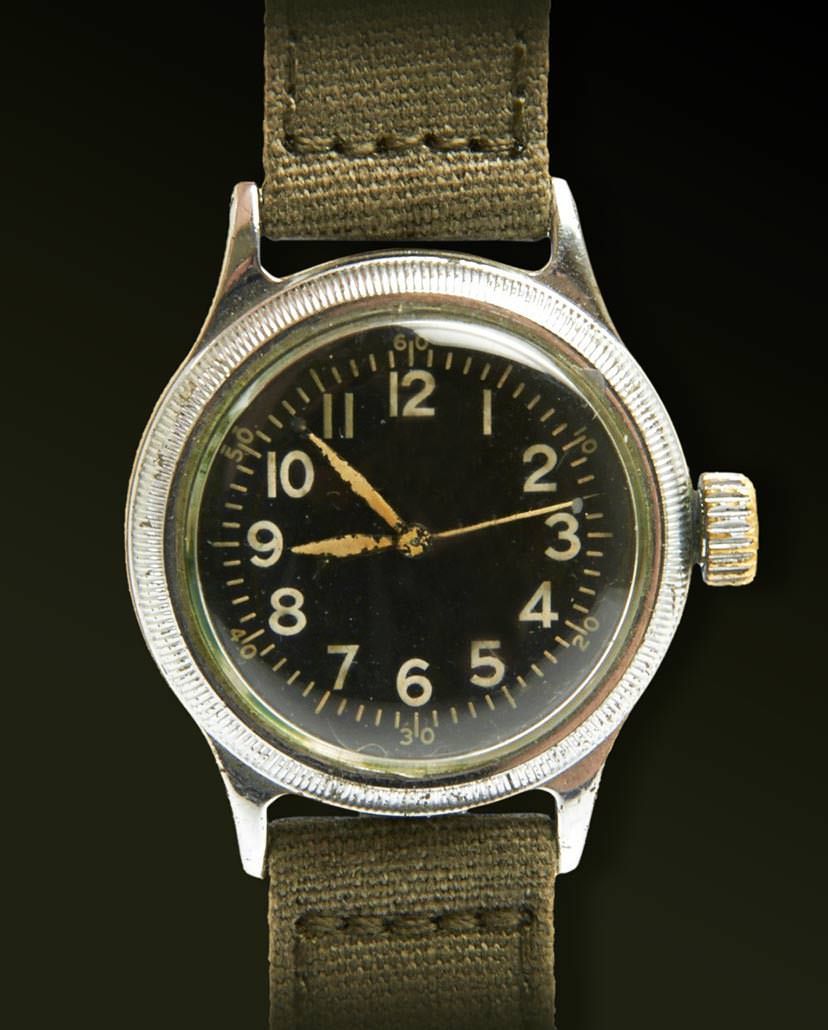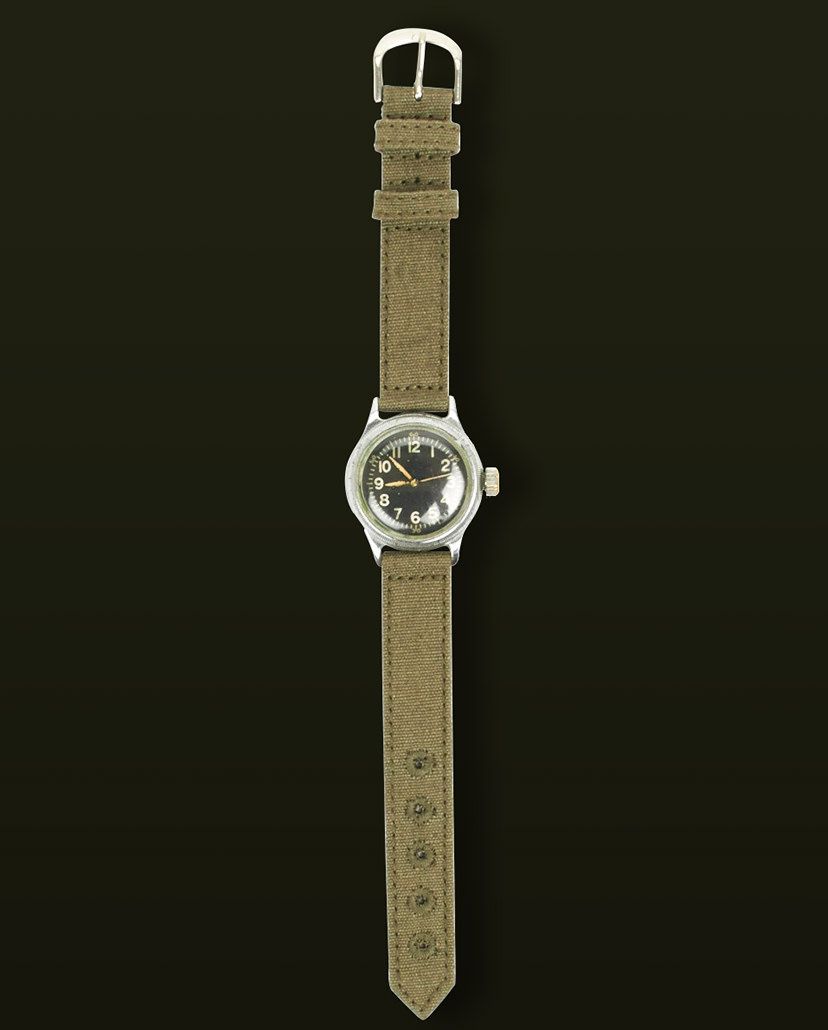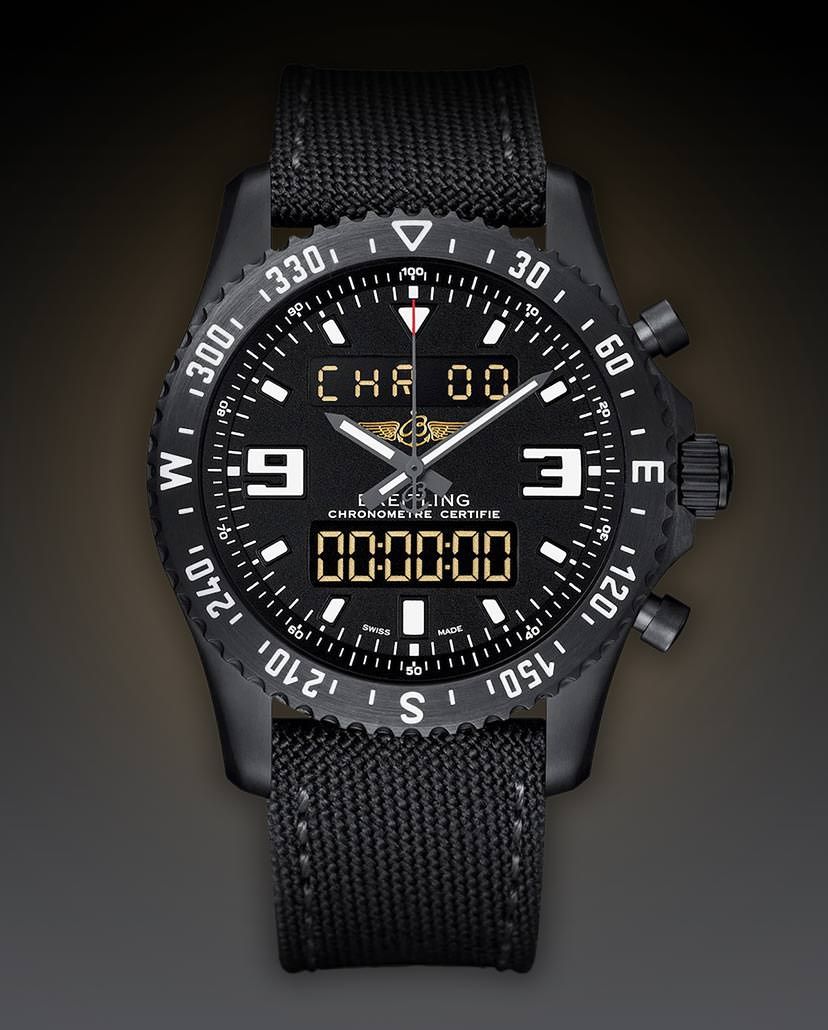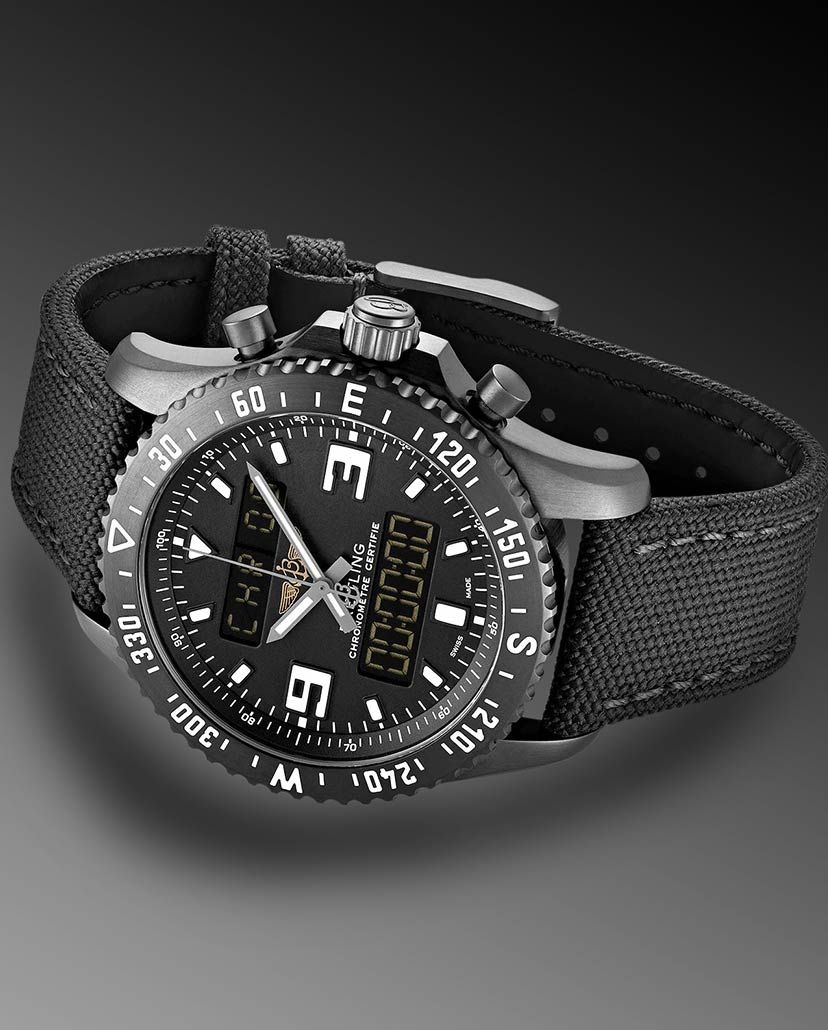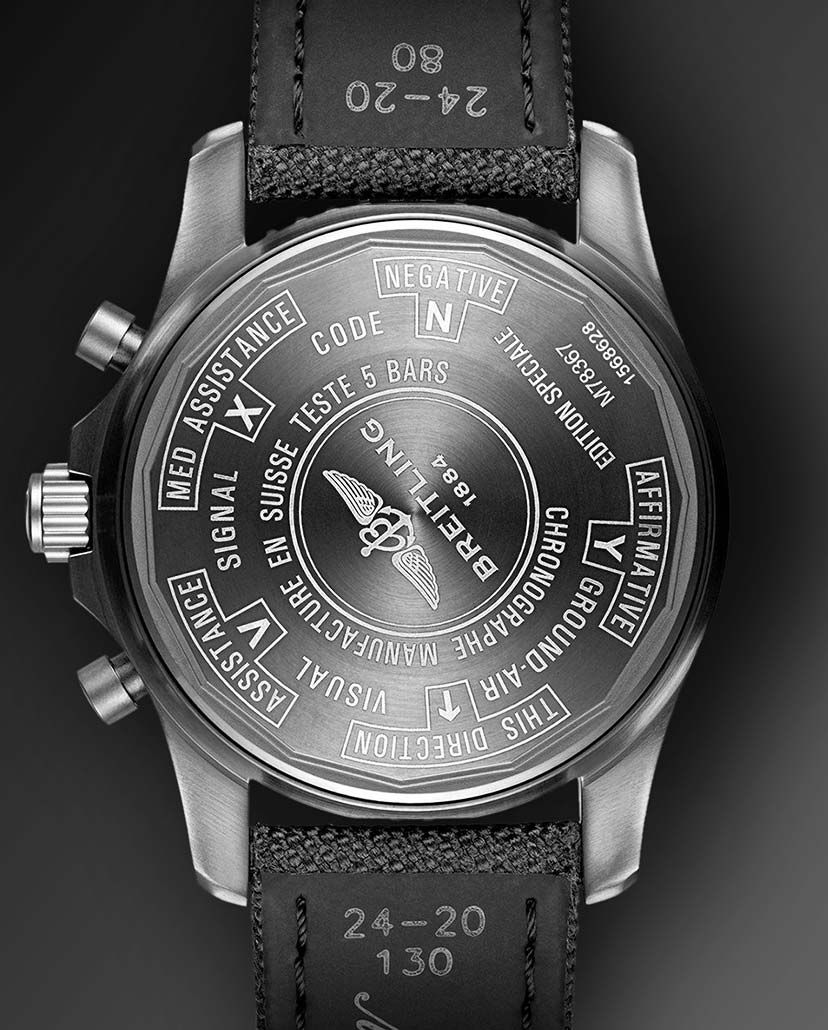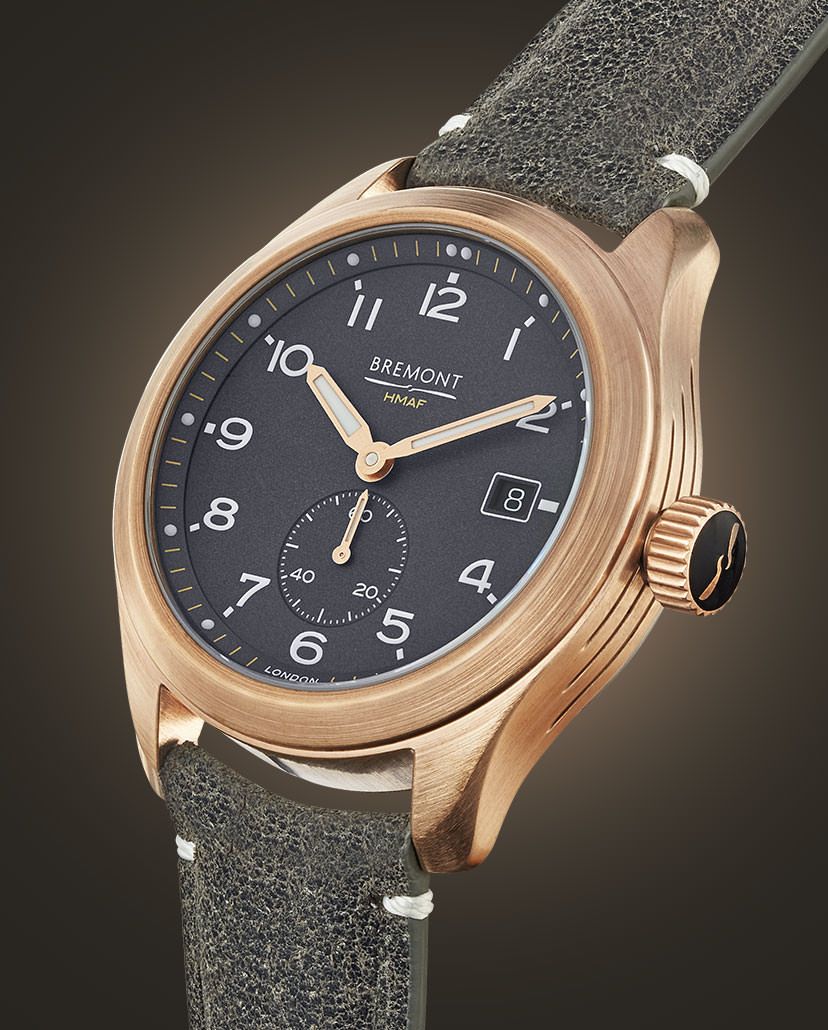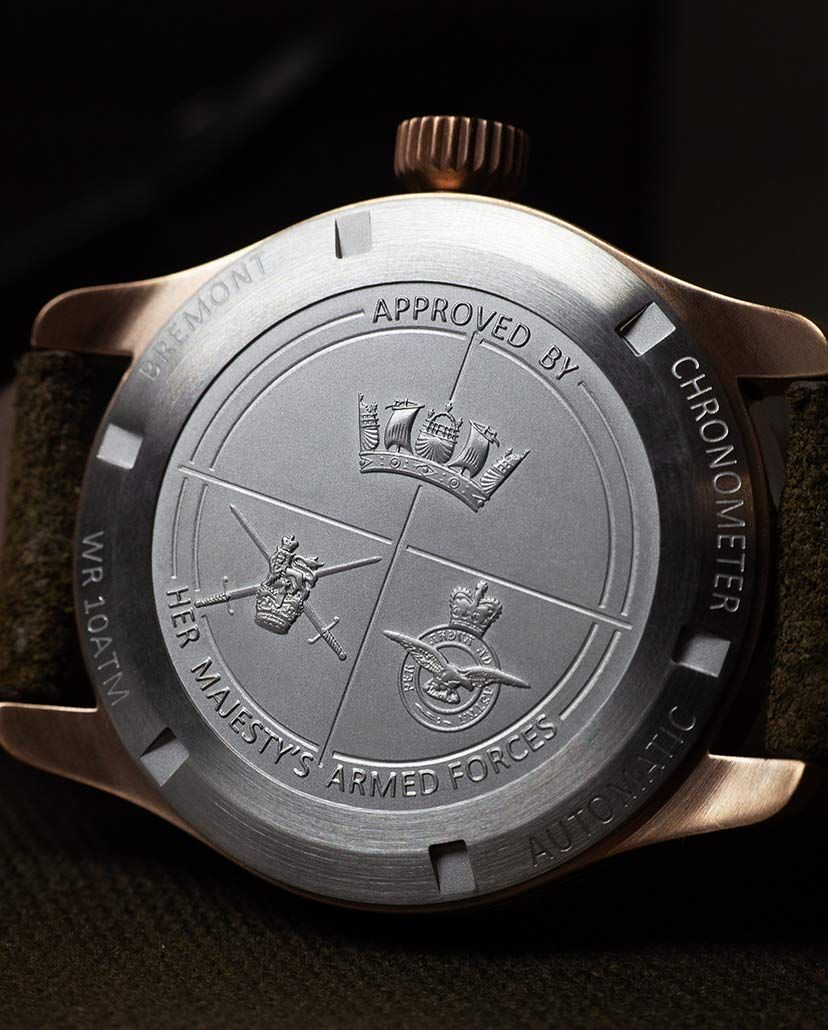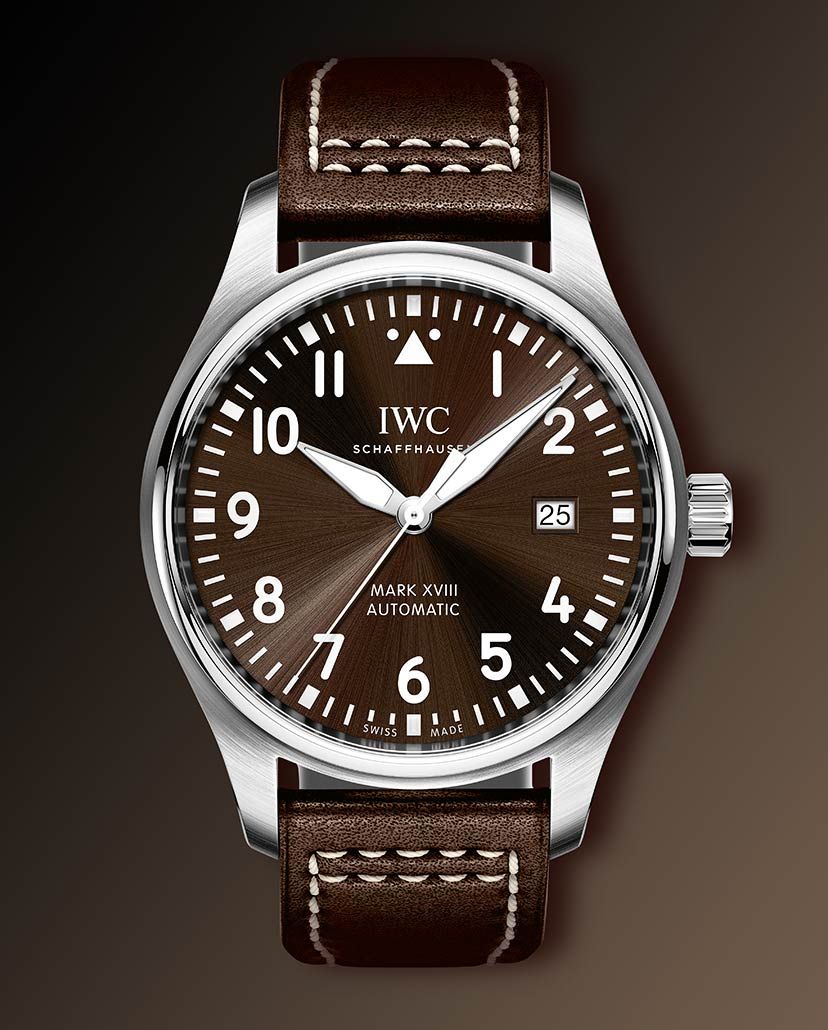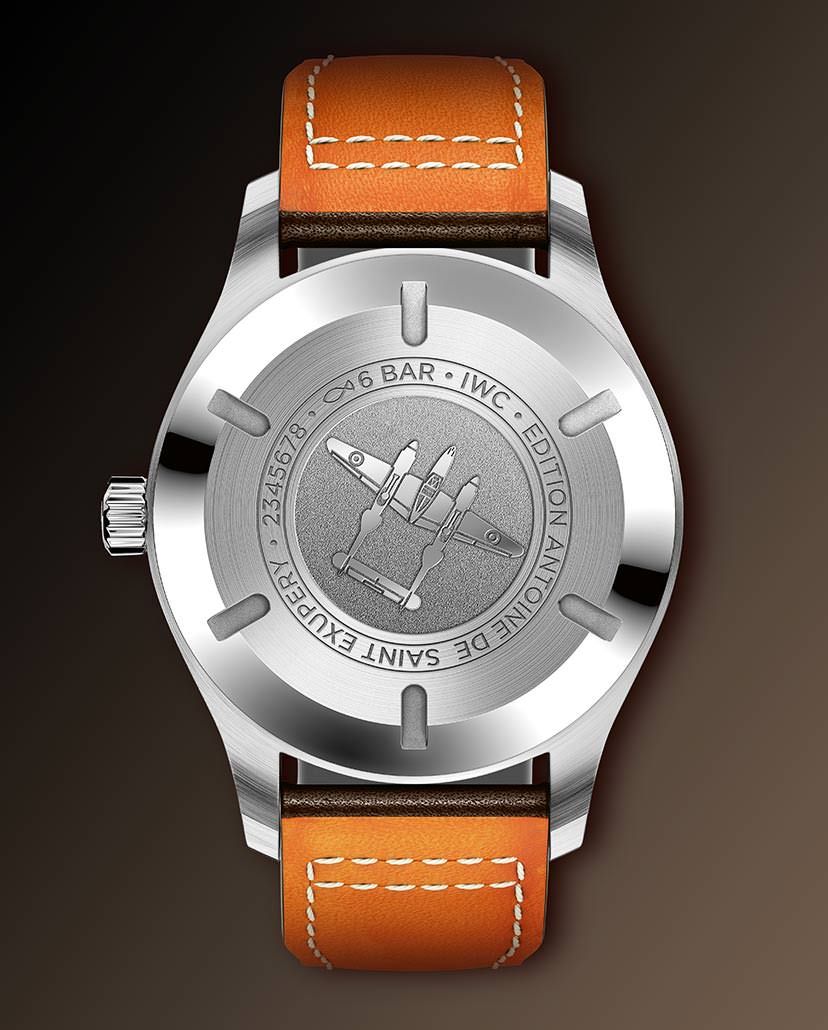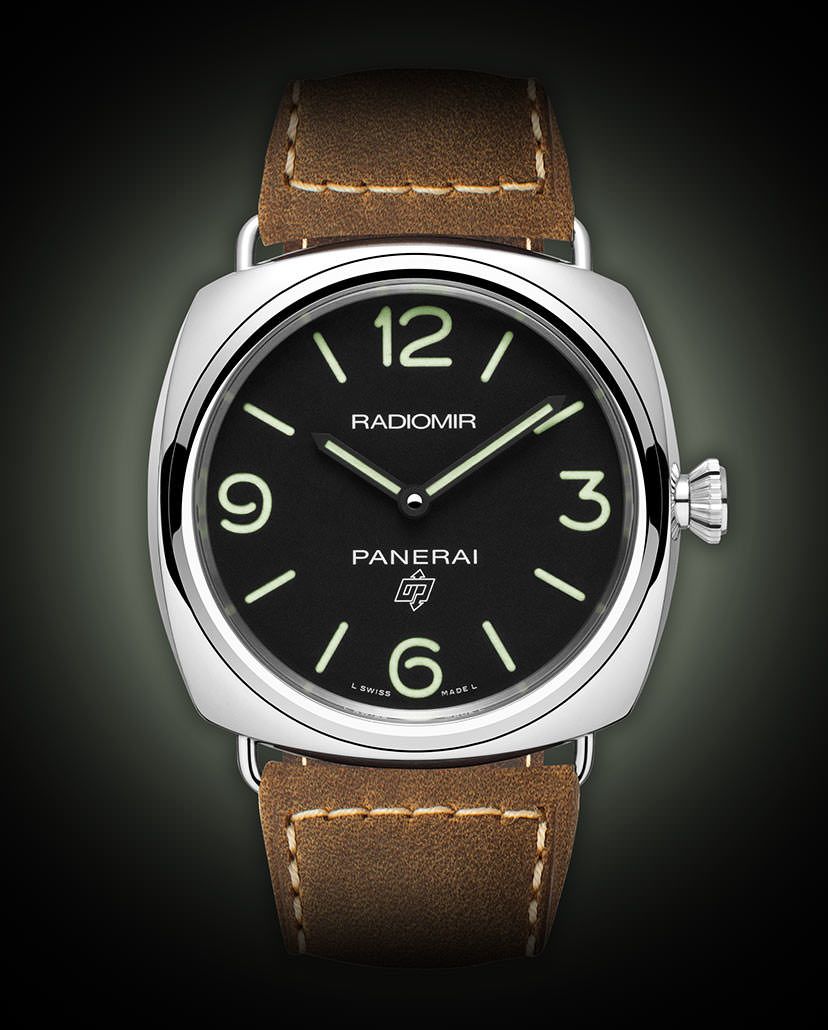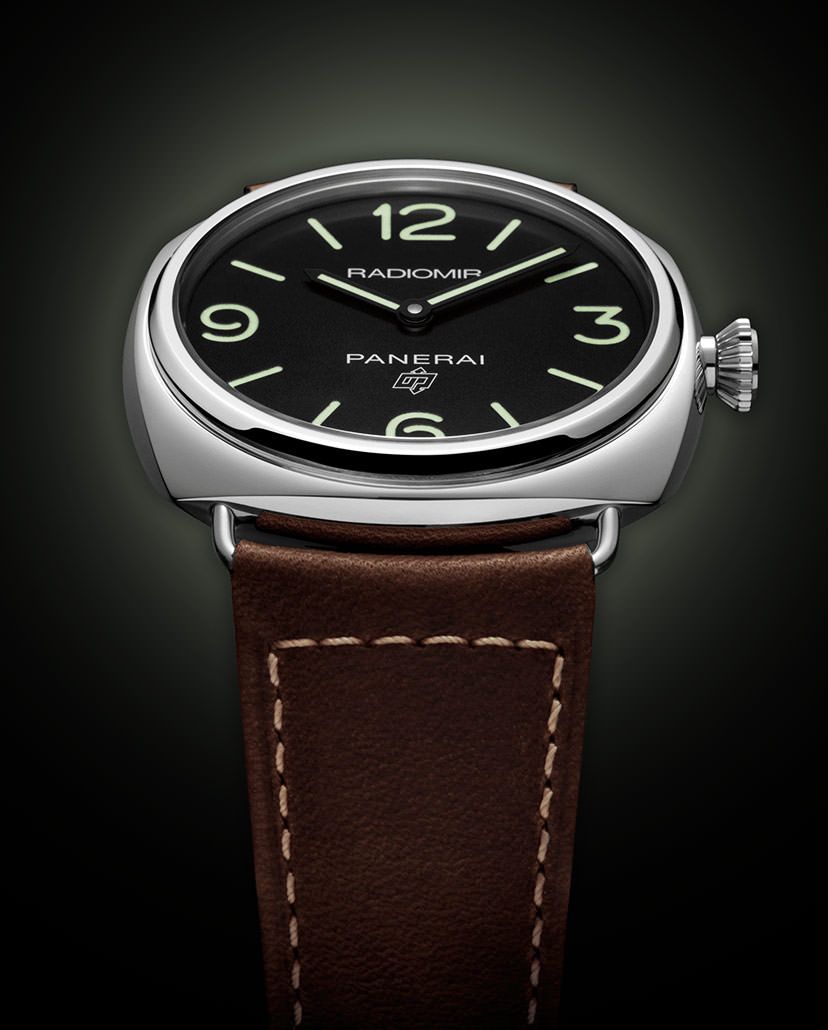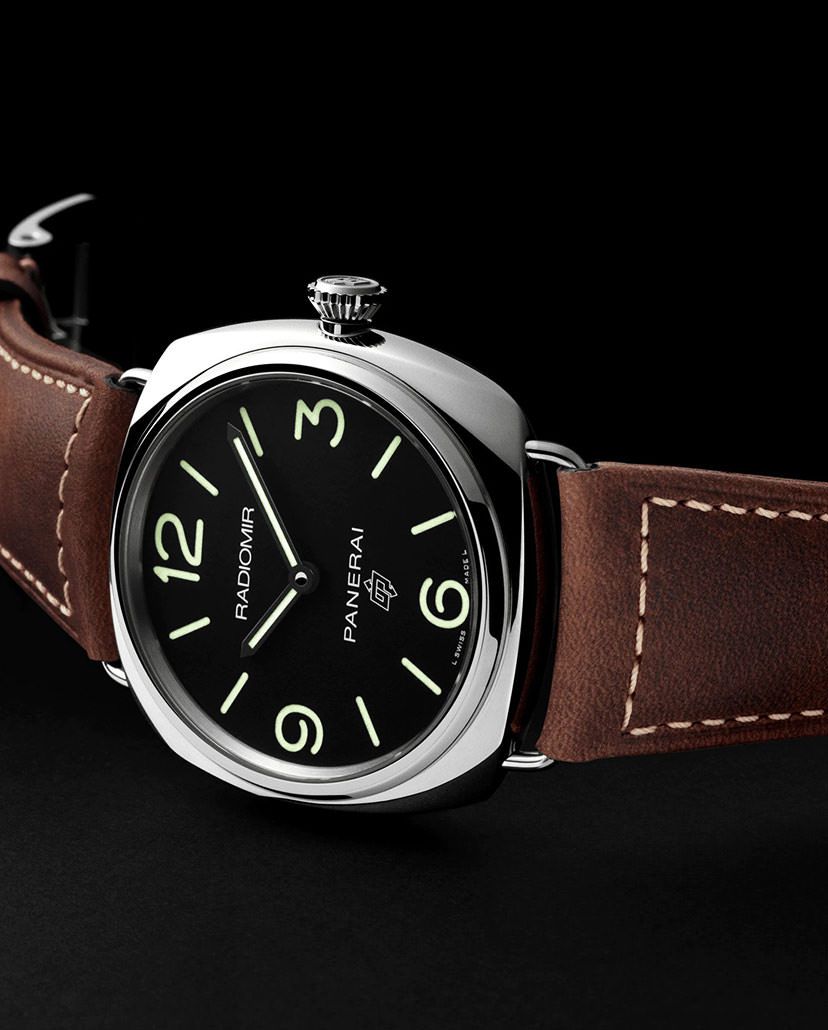FeatureFrom The Battlefield To Your Wrist: Military Watches—Then And Now
A genre in itself, several of today’s military watches are direct descendants of their iconic predecessors that originated during the greatest wars in history, while others simply reflect the raging trend of vintage-styled timepieces. Let’s have a look at the origins of military watches and where they stand today
May We Recommend
Wars and military activity have played such a major role in world history, defining nations and societies as we know them today. So it comes as no surprise that military inspirations have been seen aplenty over the years, in items of daily use, whether or not we use all the features in those that had a more functional purpose for soldiers back in the day. For instance, fashion staples such as trench coats, military jackets and combat boots have transcended their original purpose, but are still regarded highly for their functionality. Among such items are military watches. Since their inception, more than half a century ago, military watches have been an endless source of fascination to civilian watch connoisseurs, and for good reason. These purpose-built timepieces can grapple with anything our non-combatant lives can throw at them. With easy-to-read dials, non-stretchable straps, simple yet extremely resilient and reliable movements, these timepieces are almost a perfect version of wristwatches. We’ll get to some of the best contemporary military watches you can find today. But first, let’s take a look back at how they came to be.

The Rise Of Wristwatches
To understand the origin of military watches, we need to first familiarise ourselves with the circumstances that led to the rise of wristwatches, as the stories of these two kinds of timepieces are inextricably intertwined.
With no clear evidence of who invented the first wristwatch, it’s estimated that the timepiece was originally built anywhere between 1571 and 1868. But what’s confirmed is that wristwatches were exclusively worn by ladies back then. Seen more as jewellery than timekeeping devices, these watches were a big no-no for men, who only used pocket watches. However, towards the end of the 19th-century, wristwatches started to gain some acceptance among men. The chief reason for the change in the trend? War.
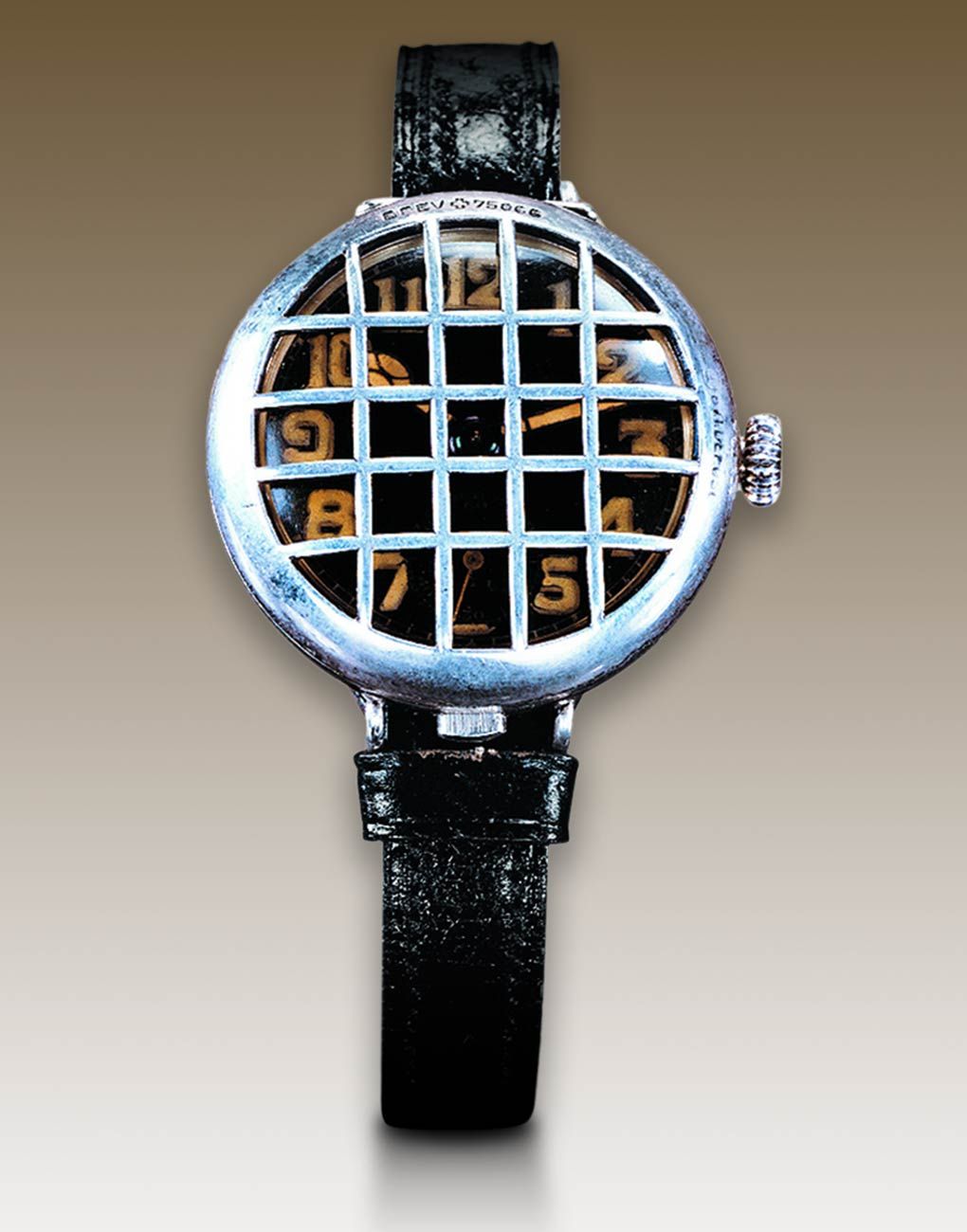
There is no collective consensus on which particular battle led to the eventual rise of the wristwatch, but a popular view is that the German Imperial Navy were supplied with pocket watches that could also be strapped to the seamen’s wrists, by Girard-Perregaux in 1880. Similar timepieces were also distributed among the British army men during the Second Boer War (1899-1902). On the other hand, some experts suggest it was the Japanese soldiers who first started to wear wristwatches as an officially issued item during the Sino-Japanese War. Despite such varying beliefs, there is one common thread—on the battlefield, pocket watches were cumbersome to use and hence, they were redesigned to be strapped on the wrists of soldiers. But the move from pocket watches to wristwatches was actually accelerated when World War I broke out.
The need for good wristwatches became apparent more than ever when the Great War witnessed widespread use of aircraft, sophisticated battle operations, and warfare in dirty and cramped trenches. By 1916, timepieces with luminous markers and unbreakable glass found their place on the wrists of the soldiers. Among such timepieces was the ‘trench watch’ that came attached with a leather strap and often featured a hinged cage to protect the glass without obscuring the perfectly legible numerals on the dial. The servicemen used them in the trenches to time the difference between a gun flash and the returning fire in order to calculate distances between friendly troops and the enemy. Numerous brands such as Waltham, Elgin, Hamilton, and Omega manufactured wristwatches to supply them to the American and British militaries.
The Evolution Towards Dedicated Military Watches
Once the Great War got over, soldiers who wore wristwatches for the first time on the battlefield returned to their civilian life and continued wearing them. Gradually, wristwatches became acceptable even among men and the timepieces transformed into a status symbol. However, the idea of making a dedicated watch for the use of the military only gained significant momentum just before World War II. As hostilities among the nations intensified, countries such as Italy developed military dive watches, America began mass-producing infantrymen’s timepieces, and Germany focused on advancing the design of the aviator’s watch, leading to the birth of military watches.
After the war broke out, several nations set standards for their military-issued watches. The US military came out with A-11, which wasn’t a specific watch model, but a production standard that they set. The specifications called for a watch with a manual-winding, hacking movement with centre seconds, an outer minute track with 10-minute demarcations, and minute and hour hands. Manufactured by three American watchmaking companies—Elgin, Waltham, and Bulova—the timepieces came in versions with and without lume. Recognised for their accuracy, durability, and water resistance, these watches were used by both the air and ground forces and were labelled as ‘watches that won the war’.
Meanwhile, the British Ministry of Defence (MOD) partnered with 12 watchmaking companies, including leading Swiss manufacturers, to make a watch built to withstand battlefield hardships while maintaining accuracy and integrity. The companies that built these timepieces were nicknamed ‘The Dirty Dozen’, and more formally, the watches were known as WWWs, a code established by the British Army to distinguish them from other military equipment and it simply stood for ‘watch-wrist-waterproof’. Some 1,45,000 were manufactured and delivered to the soldiers by 1945.

Just like the Allied nations, the Germans had set specifications for their own military watches too. According to some experts, the German army had more stringent standards than the British and the Americans, and their timepieces were better designed and more accurate. Among the brands that supplied military watches to them was A. Lange & Söhne. They built pilot watches featuring big dials, luminescent hands and markers, and a thick strap to tie them onto the wrist while flying. German military watches are rare to find these days, probably due to a European movement that led to the destruction of Nazi memorabilia.
Although World War II resulted in the loss of countless lives across the world, it led to many watchmaking advancements aimed at the convenience of the soldiers. The timepieces of this era had better water-proofing, higher durability, more accurate chronographs and movements than their ancestors. These watches would go on to influence the entire watchmaking industry for generations.
Contemporary Military Watches
Given everything that led to the military watches, you’d imagine that wearing a military watch is more than a style statement today. It’s a nod to the long and rich history of the timepieces that helped brave soldiers in military missions and precise troop movements. In modern times, watchmaking brands have catalogues full of military watches, plenty of which are descendants of their highly decorated predecessors, such as IWC’s Mark XVIII and Panerai’s Radiomir, and many more that fulfil the current demand for retro designs in the market. Here are a few exquisite contemporary military watches with upgrades to fit on your wrist.
Breitling Chronospace Military
Known for their high-quality timepieces and a perpetual search for innovation, Breitling have a rich history of military aviation watches. In 1915, the brand developed one of the world’s first chronograph wristwatches, equipped with a separate push-button exclusively for stopwatch timing. In the next two decades, Breitling made further breakthroughs and perfected their chronograph timepiece, which not only secured its place as a steadfast recorder of time in sports and racing competitions but also in calculating flight times. The timepieces quickly became the go-to watches for pilots, and by the 1930s, the brand were supplying chronograph instruments and watches to Britain’s Royal Airforce (RAF). Later, just before World War II, Breitling began supplying their timepieces to the US Air Force as well.
Since then, the brand have introduced some of the most robust and precise timepieces in the market. One of them is the Breitling Chronospace Military watch, which is a part of their iconic Professional collection. Built to endure the most extreme and unimaginable conditions, the 46mm timepiece has a black steel case with DLC coating and a bidirectional-rotating bezel that promises an exceptional grip. The complementing black dial sports oversized hands, luminescent Roman numerals at three and nine o’clock, and digital displays at six and 12 o’clock. Equipped with features such as a-1/100th-of-a-second chronograph, alarm clock, countdown timer, and a second time zone indication, the stealthy looking timepiece is perfect for a modern-day adventurer. As if all this wasn’t enough, the Chronospace Military is powered by COSC-certified SuperQuartz movement—a thermo-compensated movement that offers better accuracy than a standard quartz movement. Additionally, the timepiece is water-resistant up to 50m.
Bremont Broadsword Bronze
Founded in 2002 by Nick English and Giles English, Bremont is among a handful of young brands that have made a mark even in the short while that they’ve existed, in an industry full of brands that even go back centuries. With their aviation and military-inspired collections, the British company have cultivated an enthusiastic following among military soldiers and pilots. Unlike many military-themed watches, Bremont have actually enjoyed an official partnership with the British Ministry of Defence (MOD) since 2019 and are legitimately allowed to use the signs, symbols and Heraldic Badges of the Royal Navy, British Army and Royal Air Force.
Born out of this partnership, Bremont’s Armed Forces Collection last year saw the addition of three brand-new bronze-cased iterations of Broadsword timepieces. First launched in 2019, the original Broadsword timepiece took its design cues from the WWW vintage watches that we mentioned earlier. The latest versions don’t deviate much from the design of their predecessor and present a contemporary take on historical military watch configurations. The 40mm timepiece comes housed in a distinctive bronze case that gives it corrosion-resistant properties. Bremont’s decision of using bronze as a building material is a stand-out feature as the alloy has a unique quality of developing a patina over time, losing its initial shine and taking on a more distinguished character. Available in three dial colours—military green, deep brown, and grey, each with matching leather straps—the Broadsword Bronze has a formidable utilitarian look with a central two-hand timekeeping system, running seconds at six, a date window at three o’clock, and large white Arabic numerals printed on the dial. The timepiece also features the three emblems of Her Majesty’s Armed Forces (HMAF) on the caseback, while ‘HMAF’ appears on the dial as well. Utilising a chronometer-rated BE-95-2AV automatic movement that beats at 28,800vph, the watch has a power reserve of 38 hours.
IWC Pilot’s Watch Mark XVIII Edition ‘Antoine De Saint Exupéry’
The love affair between IWC and aviation began in 1936 when the Swiss manufacture introduced their first pilot’s timepiece called Special Pilot’s Watch, which featured a black dial, high-contrast luminous hands, and a rotating bezel. Designed to withstand extreme temperature, vibrations, different light conditions, and powerful magnetic fields, the timepiece was one of the first watches that we identify today as aviator watches, and it became known as the Mark IX. But the model that brought prestige and popularity to IWC’s Mark collection was the Mark XI that was introduced in 1948. Considered to be one of the finest military watches ever produced, Mark XI had a highly accurate movement, an inner soft iron cage forming a shield to protect the movement from magnetic interference, and a waterproof case in stainless steel. The timepiece entered Britain’s Royal Air Force (RAF) in 1949 and remained in service till 1981. In the next few decades, IWC revamped their Mark series and introduced timepieces such as the Mark XII in 1994 and later, Mark XVIII in 2016, which were recognised for their ingenious engineering and outstanding durability.
Part of this long and iconic lineage is the IWC Pilot’s Watch Mark XVIII Edition ‘Antoine De Saint Exupéry’. Presented in a 40mm stainless steel case, the timepiece pays homage to the legendary French writer, poet, and pilot Antoine De Saint Exupéry. Owing to its simplistic and utilitarian design, the watch comes with a clean tobacco brown dial, featuring central time indication, large Arabic numerals, and a chapter-ring for the minutes running around the periphery. As the hands and all the markers are Super-LumiNova treated, the timepiece is pretty legible in low-light conditions. Mark XVIII Edition ‘Antoine De Saint Exupéry’ draws its energy from the 35111 calibre that beats at 28,800vph and has a power reserve of 42 hours. To protect it from the high magnetic environment of a cockpit, IWC have covered the movement with a soft-iron case. On turning the timepiece over, we see an engraving on the caseback, depicting a Lockheed P-38 Lightning, the aircraft in which Antoine De Saint Exupéry took off on what would be his last reconnaissance flight over the south of France on July 31, 1944.
Longines Avigation Type A-7 1935
The Avigation Type A-7 models were first supplied to the US Army Air Force between the two world wars. The timepieces had to meet extremely rigorous specifications in terms of aesthetics, durability and precision, to be designated as ‘Type A-7’. Manufactured by Longines and Meylan during the 1930s, the Avigation Type A-7 was built around a mono-pusher chronograph movement. What actually set this model apart was its dial—positioned at a 40-degree angle, making it easier for pilots to read while keeping their hands on the plane’s control yoke. The Avigation Type A-7 models came in mammoth 51mm chrome-metal plated cases with different varieties of dials—black Arabic numerals or with white dials and art deco numerals.

Staying faithful to this unique and original model, Longines resuscitated the Avigation Type A-7 in 2012 with a mono-pusher chronograph and a black dial, housed in a 49mm steel case. In the next few years, the brand introduced different versions of the timepiece with a smaller case and white dial. Here is the latest version of the timepiece, launched in 2020, with the same old ‘tilted’ design of the time display. The 41mm watch has a well-balanced and cohesive layout on a lacquered, porcelain-like dial that features oversized Gothic hour numerals, two sub-dials, a chronograph seconds track on the periphery, and cathedral-shaped hour and minute hands with a central chronograph seconds hand. Powered by the automatic calibre L788.2 that has a beat rate of 28,000vph, the timepiece offers a power reserve of 54 hours. Featuring a large crown at 12 along with a pusher to set the date, on the side of the case, at seven o’clock, Longines Avigation Type A-7 maintains a cool-retro vibe.
Panerai Radiomir Base Logo
Developed over a century ago, Panerai Radiomir was by no means the first diver’s watch, but it surely was a pioneer in using a luminous substance on its dial. In order to meet the demand of the Royal Italian Navy, Panerai coated the dial with a radium-based powder that offered excellent low-light visibility and strong underwater adhesive qualities. Although the brand filed a patent for the timepiece in 1916, Radiomir watches weren’t in production until 1936. These were the prototypes of the timepiece and were supplied to the frogman commandos of the First Submarine Group Command of the Royal Italian Navy. With the advent of World War II, Panerai kept innovating and experimenting with new manufacturing techniques and made more durable and reliable timepieces. Eventually, the brand did away with using the luminous material, Radiomir, in their watches, owing to the substance’s harmful radioactive properties, but the name of the series stuck.
Click here to read about how radioactive luminous substances were phased out of watch manufacturing
Owing to its unique design, eye-catching sizes, and minimalistic dials, Panerai’s Radiomir watches have gained cult status among watch connoisseurs and collectors. Today, the brand’s history has a substantial influence on their collection, including the several Radiomir models in their portfolio. Here is the Panerai Radiomir Base Logo that is reminiscent of the older, more basic, tool-watch editions of the line-up. Launched in 2018, the 45mm timepiece comes housed in Panerai’s signature cushion-shaped case with wired lugs. Behind the glass, the watch features a standard matt-black dial with painted numerals and indices that are perfectly legible in low-light conditions. What gives Radiomir Base Logo a vintage touch is the light cream colour for the indices and hands. The timepiece is powered by the in-house P.6000 calibre, a manual-winding movement with 72 hours of power reserve. Attached to a deep brown calf leather strap, the Radiomir Base Logo is a pure purpose-built watch with no over-the-top features or decorations.





